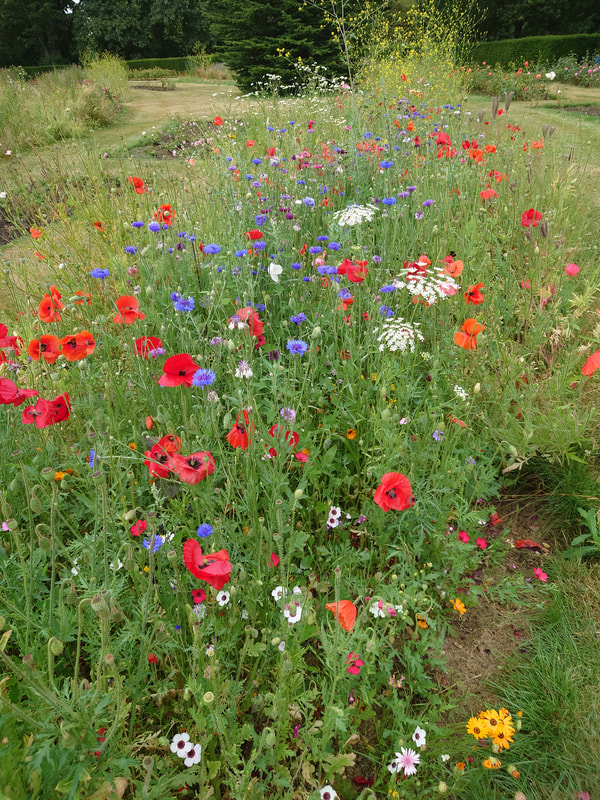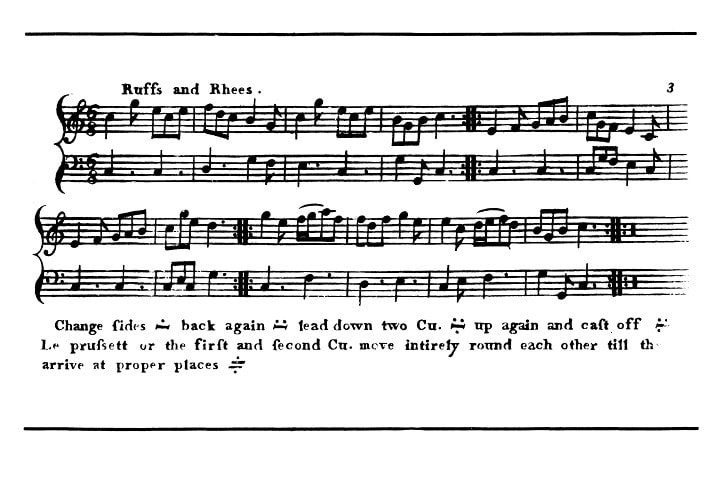The Ranger's House & Rose Garden in Greenwich Park, London - previously part of the Montagu House Estate. Photo credit: AT-H
IMPORTANT: Available only to commissioners in the Fantasia - La Folia Consortium, until 04 November 2024.
Three Country Dances
from Twelve Country Dances from the Year 1779
by C. Ignatius Sancho
arr. Althea Talbot-Howard
for High/Low Woodwind Duet
from Twelve Country Dances from the Year 1779
by C. Ignatius Sancho
arr. Althea Talbot-Howard
for High/Low Woodwind Duet
Biography of C. Ignatius Sancho (c.1729-1780)
Charles Ignatius Sancho is believed to have been born on a slave ship in the Middle Passage, whilst crossing the Atlantic between the West African Bight of Benin, and Central America. His mother died in childbirth, and his father took his own life upon arrival in the New World, rather than submit to enslavement. The orphan was taken to London by ship in his infancy, where he became the slave of three ladies in Greenwich. In his late teens, he ran away - but only around the corner, to the Duke of Montagu's household in Blackheath (today, the northeastern corner of Greenwich Park), where he went into service as the Duke's butler.
The Duke and Duchess took it upon themselves to educate him in the arts. The senior Duchess of Montagu was the former Lady Mary Churchill, daughter of the Duke of Marlborough. When she died, she left Sancho an annuity and a lump sum large enough - eventually - for him to purchase a grocery store at 19 Charles Street, Mayfair. There he sold consumer goods (including tea and sugar). He also hosted various members of society - including musicians & writers - who dropped in, in order to while away the time in conversation and tea-drinking with this celebrated African. The theatrical impresario David Garrick was one of Sancho's acquaintances.
In 1768, whilst part of the Montagu household, Sancho was painted by Thomas Gainsborough - who had been primarily engaged to paint the next Duchess. One can see the painting on the score.
Sancho corresponded with many people, including Laurence Sterne and other slavery Abolitionists. He also became the first Black person ever to vote in a British election. Purchasing the grocery shop had made him a man of property, and thus eligible for the franchise. Sancho developed a reputation as a writer: and also as a composer of miniatures. In another first, he was the first Black composer ever to have his work published.
Unlike Joseph Bologne, Chevalier de Saint-Georges - who was forbidden to do so by the French Code Noir - Sancho was free to marry: so he married a woman from the Caribbean - Anne Osborne - with whom he had seven children. They lived the entirety of their life together in London.
CONSORTIUM INFO. PAGE
Charles Ignatius Sancho is believed to have been born on a slave ship in the Middle Passage, whilst crossing the Atlantic between the West African Bight of Benin, and Central America. His mother died in childbirth, and his father took his own life upon arrival in the New World, rather than submit to enslavement. The orphan was taken to London by ship in his infancy, where he became the slave of three ladies in Greenwich. In his late teens, he ran away - but only around the corner, to the Duke of Montagu's household in Blackheath (today, the northeastern corner of Greenwich Park), where he went into service as the Duke's butler.
The Duke and Duchess took it upon themselves to educate him in the arts. The senior Duchess of Montagu was the former Lady Mary Churchill, daughter of the Duke of Marlborough. When she died, she left Sancho an annuity and a lump sum large enough - eventually - for him to purchase a grocery store at 19 Charles Street, Mayfair. There he sold consumer goods (including tea and sugar). He also hosted various members of society - including musicians & writers - who dropped in, in order to while away the time in conversation and tea-drinking with this celebrated African. The theatrical impresario David Garrick was one of Sancho's acquaintances.
In 1768, whilst part of the Montagu household, Sancho was painted by Thomas Gainsborough - who had been primarily engaged to paint the next Duchess. One can see the painting on the score.
Sancho corresponded with many people, including Laurence Sterne and other slavery Abolitionists. He also became the first Black person ever to vote in a British election. Purchasing the grocery shop had made him a man of property, and thus eligible for the franchise. Sancho developed a reputation as a writer: and also as a composer of miniatures. In another first, he was the first Black composer ever to have his work published.
Unlike Joseph Bologne, Chevalier de Saint-Georges - who was forbidden to do so by the French Code Noir - Sancho was free to marry: so he married a woman from the Caribbean - Anne Osborne - with whom he had seven children. They lived the entirety of their life together in London.
CONSORTIUM INFO. PAGE
Twelve Country Dances for the Year 1779
This charming set of harpsichord reels and jigs was presumably composed for aristocratic balls. One assumes that Sancho became familiar with the musical idiom in his roles as butler to the Dukes of Montagu. It appears that the Country Dances have not been published in a performing edition since the eighteenth century.
Three Country Dances (1779/2023) ~ I Lady Mary Montagus Reel ~ II Mungos Delight ~ III Ruffs and Rhees
The approach taken in this arrangement is to create basic ornaments for the repeats; to include an A-section recapitulation - sometimes at a faster speed; and to create the kind of chordal, finishing flourish which would have been common after many repetitions of the material, to indicate to the dancers that the dance was over. Please note that performers can repeat the main sections as often as desired - as would have happened at a ball.
This set contains one reel in common time (Lady Mary Montagus Reel); one jig in 6/8 (Ruffs and Rhees); and one dance in 6/8 time which is more ambivalent in character – partly owing to the large leaps in the melody line, which suggest a more sustained tempo (Mungos Delight).
This charming set of harpsichord reels and jigs was presumably composed for aristocratic balls. One assumes that Sancho became familiar with the musical idiom in his roles as butler to the Dukes of Montagu. It appears that the Country Dances have not been published in a performing edition since the eighteenth century.
Three Country Dances (1779/2023) ~ I Lady Mary Montagus Reel ~ II Mungos Delight ~ III Ruffs and Rhees
The approach taken in this arrangement is to create basic ornaments for the repeats; to include an A-section recapitulation - sometimes at a faster speed; and to create the kind of chordal, finishing flourish which would have been common after many repetitions of the material, to indicate to the dancers that the dance was over. Please note that performers can repeat the main sections as often as desired - as would have happened at a ball.
This set contains one reel in common time (Lady Mary Montagus Reel); one jig in 6/8 (Ruffs and Rhees); and one dance in 6/8 time which is more ambivalent in character – partly owing to the large leaps in the melody line, which suggest a more sustained tempo (Mungos Delight).
In the Regency period, when a gentleman asked a lady to dance, he engaged her for two dances, not one - and she marked him in on her programme card for those two dances. The country dance section of the ball took place towards the end of the night, once the minuets and other stately dances had been completed, and refreshments served.
This small selection of dances is around three minutes in duration when played straight through as written, and without any additional repeats. If performers prefer to play only two of the three, I recommend Mungo’s Delight, paired with either Lady Mary Montagus Reel or Ruffs and Rhees. Alternatively, one could play one dance as an encore piece.
Feel free to visualise the writer Jane Austen (and her literary characters) dancing to these very pieces of music – because it is entirely possible! One understands that she commenced dancing at public balls in the 1790s, and that these dances were in circulation some time before then.
This small selection of dances is around three minutes in duration when played straight through as written, and without any additional repeats. If performers prefer to play only two of the three, I recommend Mungo’s Delight, paired with either Lady Mary Montagus Reel or Ruffs and Rhees. Alternatively, one could play one dance as an encore piece.
Feel free to visualise the writer Jane Austen (and her literary characters) dancing to these very pieces of music – because it is entirely possible! One understands that she commenced dancing at public balls in the 1790s, and that these dances were in circulation some time before then.


















